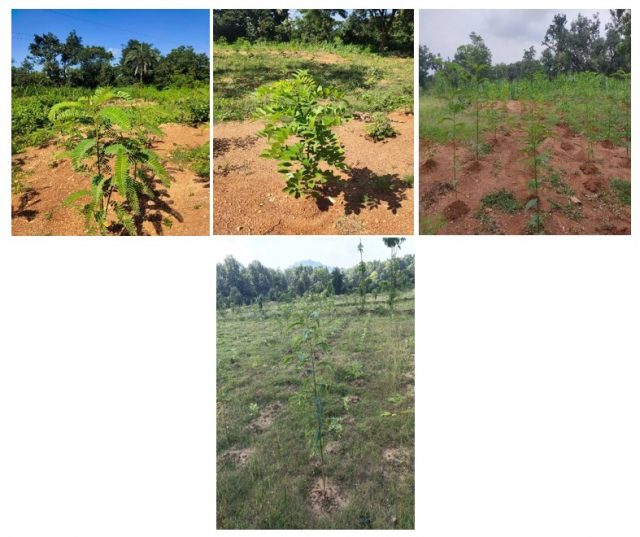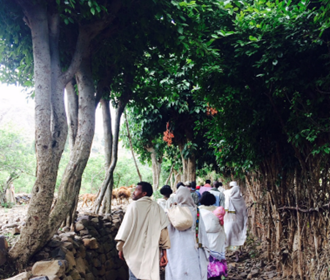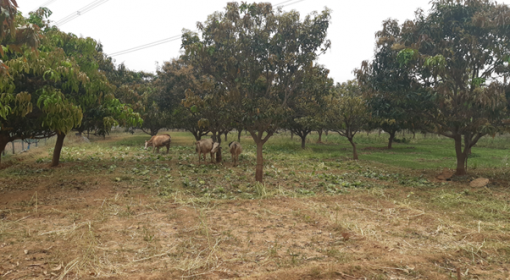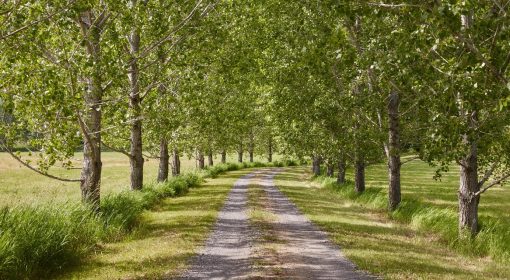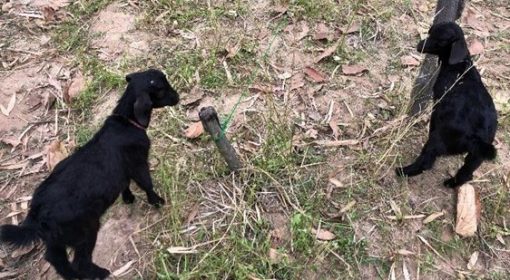By Chandrashekhar and Anjan Swar
India hosts the world’s most significant number of farmers and livestock. According to the 20th Livestock Census conducted in 2019, India has 535 million livestock animals, majorly comprising cattle (35.94%), Goats (27.80%), Buffaloes (20.45%), Sheep (13.87%) and the rest includes pigs, camels, horses, etc. The total number of cattle in the country was 192.49 million in 2019, showing a minor increase of 0.8% over the previous census. There has been a decline of 6% in the total indigenous cattle population, both descript and non-descript, over the last census.
One of the primary reasons for this decline is the acute fodder shortage that makes farmers and livestock highly vulnerable. To put the perspective right, the Indian Grassland and Fodder Research Institute estimates that by 2030, there could be a decline of 65.45 per cent in green fodder and 25 per cent in dry fodder if there is no stringent action taken from the government.
Some of the primary reasons behind the fodder crisis are:
- Rapid farm mechanisation due to which paddy and wheat straws do not get accumulated as dry fodder for livestock
- Declining land holdings due to which farmers are moving towards more cash-rich crops like vegetables, pulses and oilseeds, fruits etc.
- Increased encroachment of Grazing areas (like Gochar, Gothan, Charagah) was the most vulnerable and poor dependent on livestock grazing.
The number of goats showed an increase in 10.1% in 2019 compared to previous years. The state of Jharkhand shows an even bigger increase (38.59%) according to the Livestock Census 2019, being only second to Bengal and followed up by Madhya Pradesh and Karnataka. However, the bigger issue of the fodder crisis also hits the goat population. This growth trajectory can only be maintained further and can have a sustainable increase year after year in the percentage of goat population if we solve this fodder crisis problem which has already started impacting poorer people hard and which only will be aggravated with each passing year if no proper actions are being taken.
One of the answers to the fodder shortage issue lies in silvopasture. The methods of silvopasture have been initiated in the few teams of PRADAN based in the Santhal Paragana region of Jharkhand, with a special focus on goat rearing within a silvopasture model.
Goat Rearing with silvopasture model
Silvopasture is an integrated land use practice that combines trees, forage and livestock and has existed for millennia. Modern silvopasture, however, is not just a new name for an old method. It is rooted in sound ecological principles and demands skills in managing complexity. Integrating trees, forages and livestock as a silvopasture system can boost income, soil health, and ecosystem and reduce the need for outside inputs.
Tree plantation
- For goats, six types of tree fodder, namely Jackfruit, Sesbania, Subabul, Gliricidia Sepium, Moringa and Manila Tamarind, are suitable to be selected because of its fast-growing and higher crude protein (CP) availability.
- For trees, one of the following are recommended: Melia Azedarach (Mahaneem), Acacia Nilotica (Babool) & Ficus Glomerata (Dimitri). Especially Mahaneem is highly preferred by small ruminants (Goat/Sheep etc.), and the fodder helps increase milk production.
Table 1 shows an overview of the important characteristics of tree fodder species.
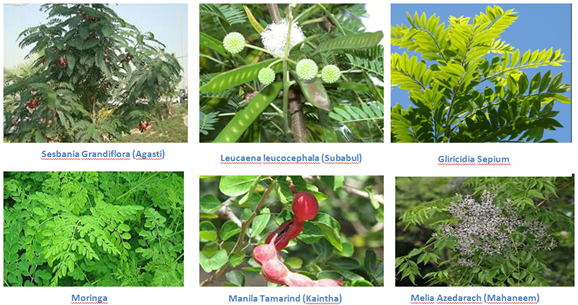

Grass Plantation
Grassland is another integral part of the Silvopasture model, and it controls soil erosion and easy access to fodder for small animals like goats and sheep. The different types of grass fodder included in the Silvopasture model are Anjan grass, Lucerne and Super Napier. All these are perennial grass fodders and need to be transplanted only once. Depending on the agroecological context other (indigenous) grass species can also be suitable.

Plantation Estimate
Around 200 goats can be fed from 1 hectare of silvopasture (tree & Grass) land around the year. Therefore, a 4 ha silvopasture tree & grassland development has been proposed in a patch for around 800 goats population, as shared below. Table 2 gives an overview of the associated costs for a silvopasture system.
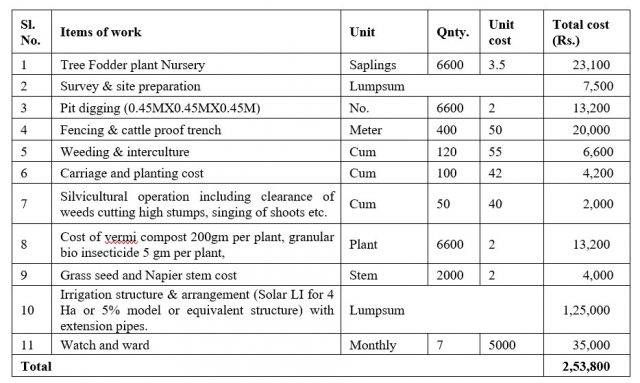
The costs of the silvopasture system will be recovered from payments that people make per goat for feeding cost at 365/- rupees per goat. The price of one goat at the age of one, weighing 12kg, would be 3120,- rupees, so this would allow a viable business model for goat keepers and the silvopasture system management. Additional fodder will be stored as pellet/silage/hey form, where this would increase the cost with 1.5 rupees per kg.
Silvopasture systems could be developed in either private land or on common lands (Gochar, village land etc.) based on Gram Sabha approval. In such a system every village could have one producer group of livestock farmers and the owners of the land of the silvopasture system. For fodder preservation support like silage, pellet PG will take support from Farmer Producer Organisation (FPO) or feed entrepreneur. For common lands, Panchayat Raj Institution (PRI) should take the ownership of the initiative and part of the governance and decision making to access and maintain the silvopasture model.
Currently within the Green Transformation Pathways project, the silvopasture model is piloted in two blocks of Godda District (Sundarpahari and Boarijore). A similar intervention was done in Shikaripara block of Dumka district under the HDFC banks CSR fund. The total coverage is 4 hectares. In each block, 30000 nursery trees are prepared. The trees adopted are Moringa, Sesbenia, Mahaneem, Glyricidia, and Subabool. The grass seeds adopted are Anjan grass, Sun hemp, Hedge Lucerne, Berseem, and Napier. Germination is at 60-70%. This silvopasture initiative is captured in the photographs below.


